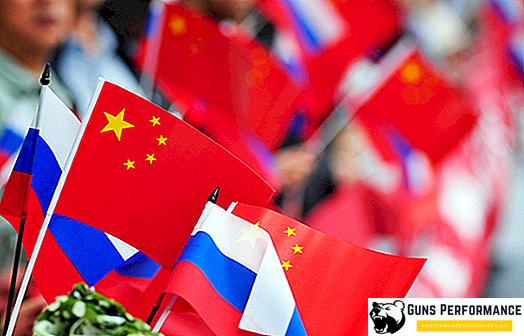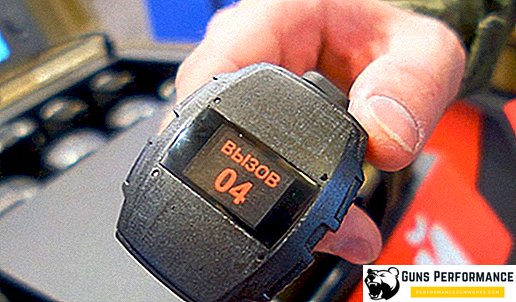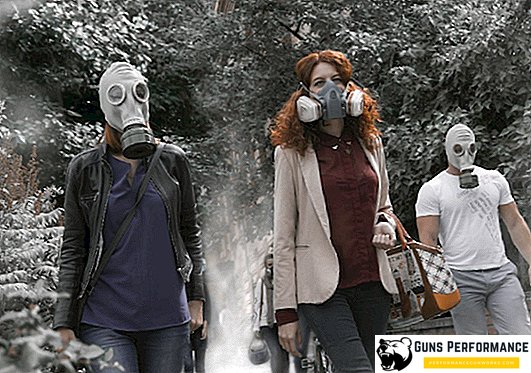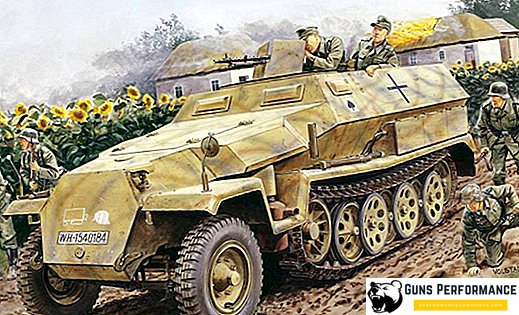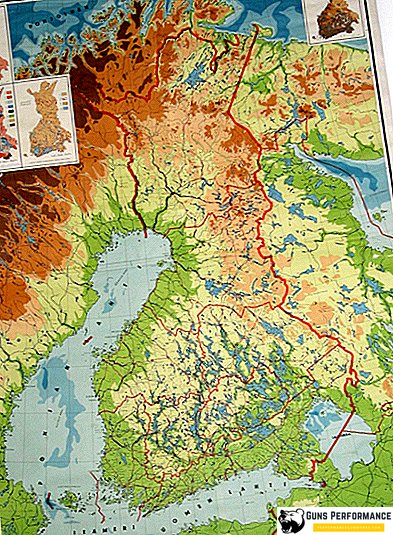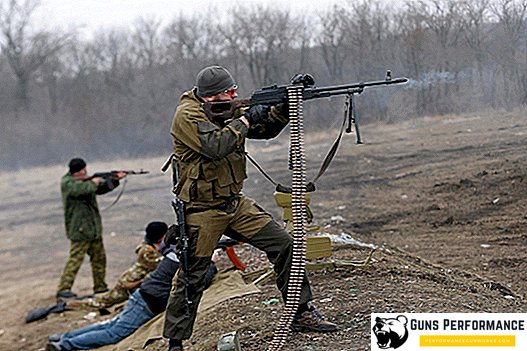The last quarter of the XIX century was very rich in landmark events for the history of small arms. It was during this period that several samples of magazine rifles were born, which will serve the soldiers of their countries for the next half century. In 1898, the famous Mauser Gewehr 98 was adopted by the German army, which was also destined to visit the trenches of Verdun and the snows of Stalingrad. In 1891, the Russian army received the Mosin-Nagant rifle, the famous “trilinea”, which will share with the Russian soldier all the hardships and tribulations of the two world wars. In 1895, Lee-Enfield, a rifle that has an even more interesting fate, appeared in Britain.
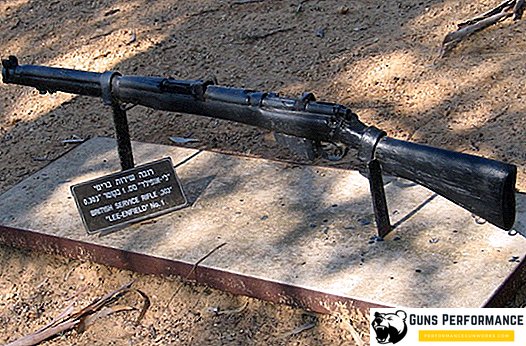
This weapon has traditionally caused great interest among collectors with a large number of modifications and its rich history. It is safe to say that the Lee-Enfield rifle itself has already become the brightest page of the military history of the last century.
A bit of history
Lee-Enfield rifle adopted in 1895. In fact, it was a deep modernization of the Lee-Metford rifle, created in 1888. This rifle was originally created for black powder ammunition, the use of smokeless powder cartridges showed the complete unsuitability of its barrel. Therefore, Lee-Enfield has received a new trunk with deep rectangular grooves. Also, the sights of the new weapon were changed. Lee-Enfield received her first baptism of fire in southern Africa during the Boer War.
Those of us who read out in childhood by Louis Bussinar should remember the heavy “Burahs” that could hit the enemy at inconceivable distances. These were Lee-Enfield, however, for the most part the British were armed with them, and the Boers used Mauser German rifles. If the rebels had English rifles, then in small quantities, taken as trophies on the battlefield. By the way, the German Mauser (for the most part the sample of 1888) proved itself in that war much better than Lee-Enfield. A reminder of that war was the nickname, which tightly stuck to this English rifle.

The British won the war, but pretty suffered from the German rifles, which surpassed Lee Enfield and in the firing range, and in the rate of fire. Therefore, after the victory, they began to modernize their rifle. This resulted in the appearance in 1903 of a new modification of the rifle, which received the abbreviation SMLE Mk I, which could be interpreted as S - short ("short"), M - magazine ("shop"), L - Lee (the name of its designer), and E - Enfield (the city where this weapon was produced).
The main difference between the new weapon was its size - it was intermediate between a full-fledged rifle and a cavalry carbine. For that time, this decision was truly revolutionary. A single rifle for all types of troops was conceived, and like any new idea, it was met with hostility by many military theorists of the time. During the fighting in Africa, cavalrymen often had to dismount and fire on foot.
In 1907, another modification of the rifle, SMLE Mk.III, which was loaded with clips, was adopted. It is this rifle that will become the main weapon of the British soldiers during the First World War and will show very good results. Lee-Enfield of this modification was very popular among the troops, the soldiers loved it. This weapon had one drawback - a rather high complexity of production, in 1916 a simplified version of the SMLE Mk.III was released, perfectly suited for wartime.
Lee-Enfield showed himself well in the difficult conditions of the trench warfare on the Western Front. To maintain the rifle in working condition was enough minimal effort. To protect their weapons from water and mud, soldiers often wrapped the barrel and bolt with rags and continued to fight.
This rifle became the main weapon of the English army right up to the beginning of the Second World War. Armed with SMLE Mk.III and the army included in the British Commonwealth.
Before the Second World War, work began on the improvement of weapons, they led to the appearance of the SMLE No.1 rifle (sometimes they write SMLE No.4 Mk. I). In this modification, the receiver was strengthened, the barrel, the bed and the sights were changed (a diopter sight appeared).
This rifle was even simpler and more reliable than early modifications. It has become even easier to maintain. The time of juggling the shutter has decreased, which increased the rate of fire of the weapon. It has become higher than that of the “Mauser” - its main opponent.

Based on SMLE No.4 Mk. I created a sniper rifle. The British simply took rifles from the factory with the best shooting accuracy and mounted optical sights on them (they went the same way in Germany and in the USSR). The sniper rifle was designated SMLE No.4 Mk. I (T).
In 1944, active hostilities began in Asia. Lee-Enfield was too long to conduct combat in the jungle, so a special short modification was developed specifically for this theater of operations, and it was called so: Rifle No. 5 Mk. I Jungle Carbine. This weapon had a shortened trunk, forearm, it was distinguished by the presence of a conical flame arrester. However, it should be noted that this version of the rifle was not very successful.
Lee-Enfield rifles were in service with the British Army until the late 50s. It has been used for many years in countries that were previously British colonies.
During the Afghan war, Lee-Enfield and Lee-Metford were actively used by the Afghan guerrillas against the Soviet troops. There are quite a few contradictory stories about this weapon and its use.
For example, that a bullet fired from the "Bura" could penetrate not only body armor, but also armor BTR. There is information that a Soviet transport helicopter was shot down from this rifle. Disputes around these rifles and their fighting qualities, as well as the effectiveness of their use in that war, continue to this day.

Description of the weapon
Lee-Enfield is a reloading rifle with manual reloading and a longitudinal slide. A feature of this weapon is the store, which stands for the dimensions of the rifle, but is not removable. That is, it can only be charged attached to the weapon. Magazine latch is in the trigger guard, it is separated only for cleaning or replacement.
The store is replenished through a window in the receiver; this can be done only with the shutter open. You can load a rifle with one cartridge, or you can immediately insert a clip with five cartridges. To install the clip in the store there are special guides.
Locking the shutter is due to two projections in the middle part of the shutter. The cock is cocked when it is closed. The shutter handle is lowered. The bolt is comfortable, with a small stroke, which provides the rifle with a high rate of fire.

Shock trigger trigger, the fuse is on the left side of the receiver. It is also very convenient, allows you to manipulate without changing the grip, with one finger.
Lee-Enfield two-stage rifle, which contributes to improved accuracy.
The stock of weapons is compound, it includes butt and forearm. The neck of the butt has a pistol shape, very comfortable. Three recesses were made in the butt: one serves for various accessories, the function of the others is to reduce the weight of the weapon. The barrel pad consists of two upper and one lower parts, they are made of wood.
Advantages and disadvantages of a rifle
Advantages:
- small dimensions and low weight;
- excellent ballistic characteristics of the cartridge;
- high rate of fire;
- excellent ergonomics.
Disadvantages:
- obsolete chuck with rim;
- obsolete clip, inconvenient store design;
- shutters of different rifles do not fit each other;
- bolt design contributes to the wear of the receiver.
Specifications
| Model | SMLE Mk. III | Rifle No. 4 Mk. I | Rifle No. 5 Mk. I |
| Cartridge | .303 British | ||
| Caliber | .303 inches | ||
| Weight | 3.96 kg | 4.11 kg | 3.24 kg |
| Length | 1132 mm | 1129 mm | 1003 mm |
| Barrel length | 640 mm | 477.5 mm | |
| Effective range | 914 m | 500 m | |
| Sighting range | 2743 m | 1000 m | |
| Initial bullet speed | 744 m / s | 774 m / s | |
| Amount of cartridges | 10 | ||


